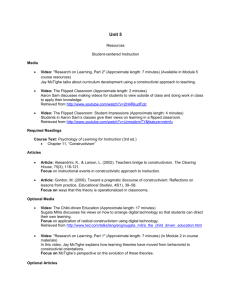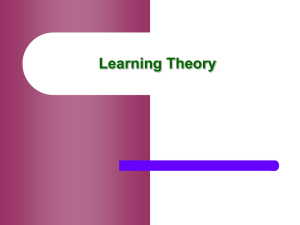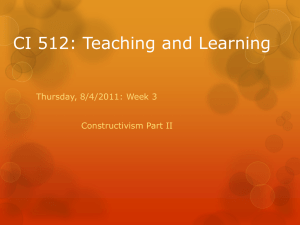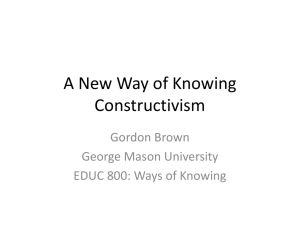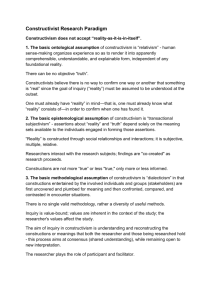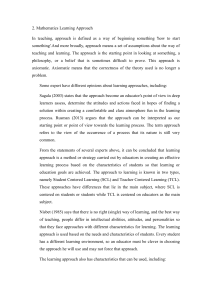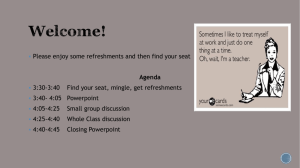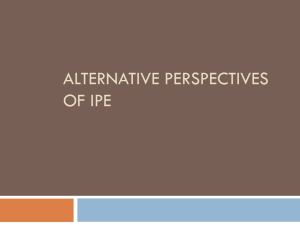Constructivist Thought
advertisement
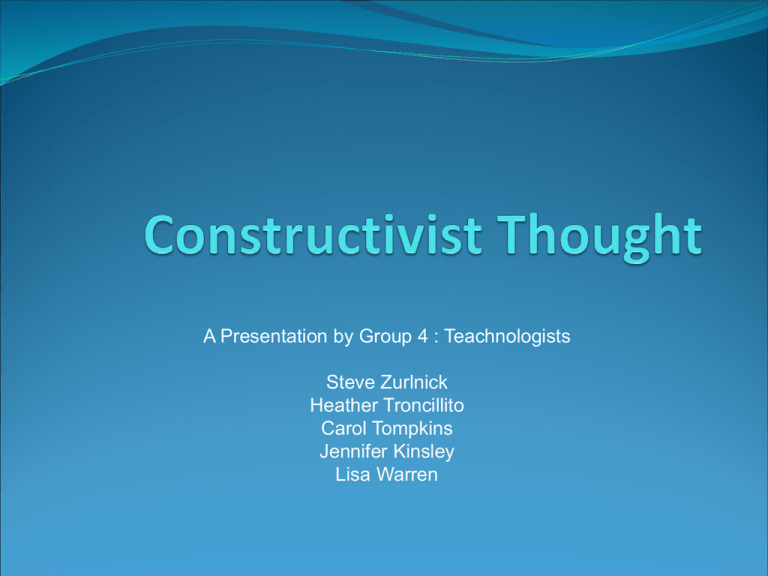
A Presentation by Group 4 : Teachnologists Steve Zurlnick Heather Troncillito Carol Tompkins Jennifer Kinsley Lisa Warren What is Constructivism? Learners use their prior knowledge to gain understanding of a new concept. To make sense of a topic/concept we use both prior knowledge and new experiences to influence learning. The History Behind Constructivism Based off of social learning theories developed by scholars such as Jean Piaget, Eleanor Duckworth, George Hein, and Howard Gardener. Scholars such as Berger and Luckmann also introduced the concept of social construction of reality where a human being must develop their own understanding of our social world. Roger Bybee used these theories to develop an instructional model called the “5 E’s.” A Classroom Guided By Constructivism Teacher is no longer on stage, but instead acts as a guide while students facilitate their own learning. Teachers use methods such as the 5 E’s where investigations and activities are included under the headings of each E which can be taught independently or in sequence. The 5 E's of Constructivist Learning Engage • Students make connections between past and present learning experiences. Explore • Students work together to investigate the chosen topic/concept while the teacher acts a facilitator and guides the students. Explain • Students work in groups and support each other’s understandings through communicating their individual experiences. The teacher then introduces the vocabulary (labels) surrounding the topic/concept. The 5 E's continued. . . Elaborate • Students expand on the learned concepts by making connections to their prior knowledge and the world in which they live. Evaluate • Authentic assessments are used to determine if the students have attained understanding of the concept/topic. This may include rubrics, portfolios, checklists, etc. The teacher then uses this evidence to guide future learning. Advantages and Disadvantages to Using the Constructivist Approach The advantages and disadvantages can be seen on our mind map created on gliffy.com: http://www.gliffy.com/publish/1625219/ Sample 5E Science Lesson Plan For our science lesson on “Parts of a Plant” please double click on the pdf document below to open it: Resources (2001). Miami Museum of Science. Retrieved February 25, 2009, from Constructivsm and the 5 E's Web site: http://www.miamisci.org/ph/lpintro5e.html Hoover, Wesley A. (1996, August). Southwest Educational Development Laboratory. Retrieved February 25, 2009, from The Practice Implications of Constructivism Web site: http://www.sedl.org/pubs/sedletter/v09n03/practice.html Kickbusch, Ken (1996, June). Wisconsin Education Association Council. Retrieved February 25, 2009, from Teaching for Understanding: Educating Students for Performance Web site: http://www.weac.org/News_and_Publications/education_news/ 1996-1997/under.aspx


